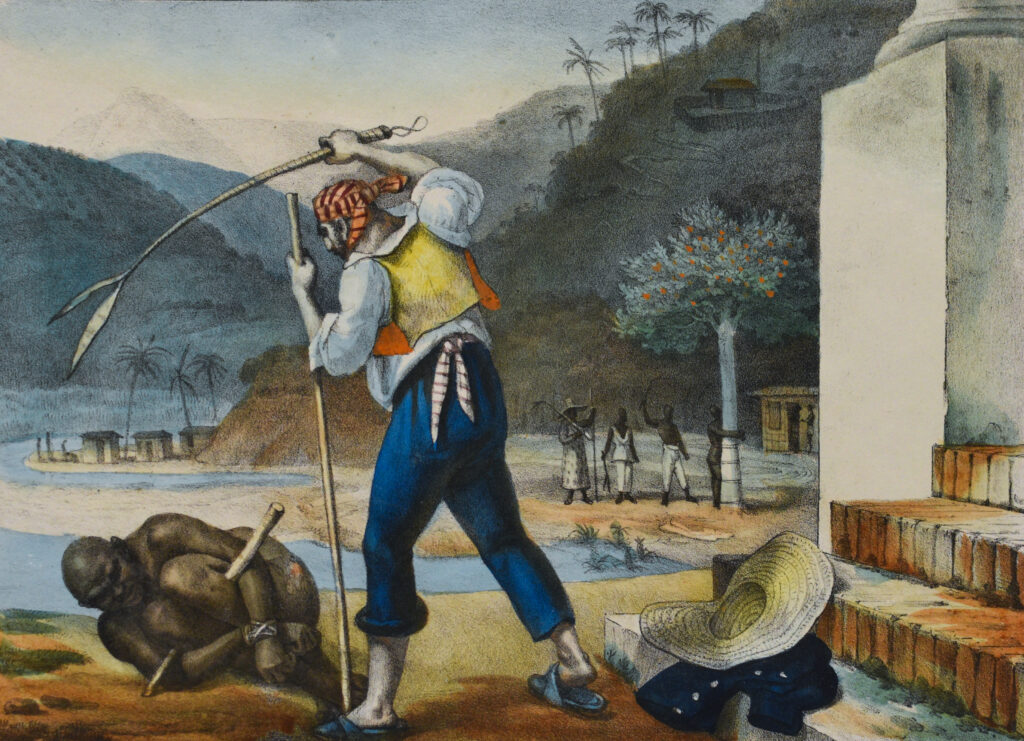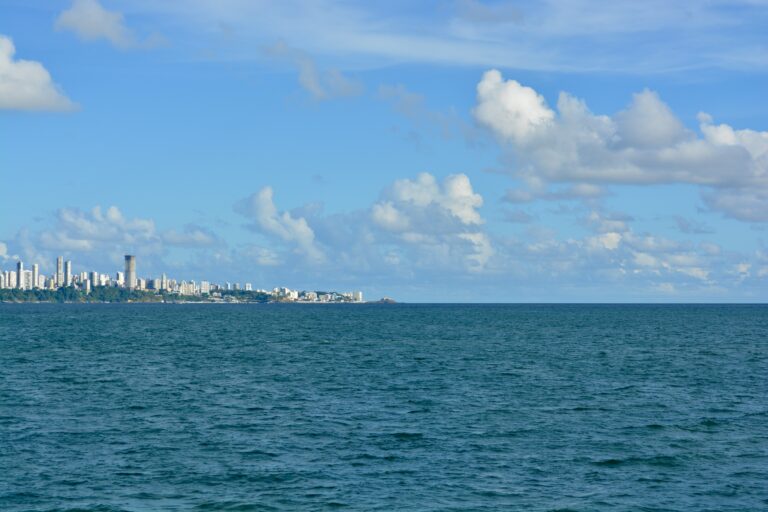In 1505, the first group of slaves from Sierra Leone were forcibly taken from their homes and transported across the Atlantic Ocean to Brazil. The journey from Sierra Leone to Brazil was long and treacherous, and the conditions on the slave ships were horrific.
This blog post will describe what the journey would have been like for the slaves who were transported in 1505, including the conditions on the slave ships, the length of the journey, and the impact that this journey would have had on the physical and mental health of the slaves.
Table of Content
ToggleImagine what sorrow
The journey from Sierra Leone to Brazil would have taken several months, depending on the weather and the conditions at sea. The slaves would have been forcibly taken from their homes and marched to the coast, where they would have been loaded onto slave ships. The conditions on these ships were terrible, with hundreds of slaves packed together in dark, cramped quarters. The slaves were often chained together and forced to lie on their backs in rows, with barely enough room to move. The smell of human waste, vomit, and disease would have been overwhelming.
The slave ships were notorious for their inhumane treatment of the slaves. The slaves were often beaten and mistreated by the crew, who saw them as nothing more than cargo to be transported across the ocean. Disease was rampant on the ships, and many slaves died from illnesses such as dysentery and smallpox. The lack of proper food and water also took a toll on the slaves’ health, with many suffering from malnutrition and dehydration.
The journey across the Atlantic Ocean was long and treacherous, with the ships facing storms, rough seas, and the constant threat of pirate attacks. Many slaves died during the journey, either from illness or from being thrown overboard when they became sick or were deemed unfit for sale. The journey was also mentally taxing on the slaves, who would have been separated from their families and communities and forced to live in constant fear and uncertainty.
By the time the slaves arrived in Brazil, they would have been physically and mentally exhausted from the journey. They would have been sold at slave markets and forced to work on plantations, mines, or in households. The journey from Sierra Leone to Brazil was just the beginning of their enslavement, and their lives would be marked by constant abuse, exploitation, and dehumanization.
In conclusion, the journey from Sierra Leone to Brazil in 1505 was a brutal and inhumane experience for the slaves who were forcibly taken from their homes and transported across the Atlantic Ocean. The conditions on the slave ships were horrific, with the slaves packed together in cramped quarters, suffering from disease, malnutrition, and dehydration. The journey was mentally and physically taxing on the slaves, who would have been separated from their families and communities and forced to live in constant fear and uncertainty. The journey was just the beginning of their enslavement, and their lives in Brazil would be marked by constant abuse and exploitation.
Here are some references on the topic of slaves that you may find helpful:
“The Slave Trade: The Story of the Atlantic Slave Trade, 1440-1870” by Hugh Thomas (Simon & Schuster, 1997)
“Slavery and Social Death: A Comparative Study” by Orlando Patterson (Harvard University Press, 1982)
“African Slavery in Latin America and the Caribbean” by Herbert S. Klein (Oxford University Press, 1986)
“The Slave Ship: A Human History” by Marcus Rediker (Penguin Books, 2007)
“The Making of New World Slavery: From the Baroque to the Modern, 1492-1800” by Robin Blackburn (Verso, 1997)
“Many Thousands Gone: The First Two Centuries of Slavery in North America” by Ira Berlin (Harvard University Press, 2000)
“The Problem of Slavery in the Age of Revolution, 1770-1823” by David Brion Davis (Oxford University Press, 1999)
“Slavery and the Making of America” by James Oliver Horton and Lois E. Horton (Oxford University Press, 2004)
These books offer a range of perspectives on the history and impact of slavery, and may be useful for further research or reading on the topic.
Vespucci's letters are published in 1505
In 1505, the Italian explorer Amerigo Vespucci published a collection of letters describing his travels in the New World. These letters, which were published under the title “Mundus Novus” or “New World,” were groundbreaking in their descriptions of the geography, flora, and fauna of the Americas, and their impact on European perceptions of the New World cannot be overstated.
Vespucci’s letters were published at a time when Europeans were just beginning to explore and colonize the Americas. Christopher Columbus had made his first voyage to the New World in 1492, and subsequent voyages had revealed a vast new continent with riches beyond imagining. But the details of this new world were still largely unknown, and Vespucci’s letters provided some of the first detailed descriptions of the land, people, and animals that Europeans encountered in the Americas.
Vespucci’s letters were divided into four parts, each describing a different aspect of his travels. The first part provided a general description of the New World, including its geography, climate, and natural resources. Vespucci described the land as “immense, vast, and incomparably fertile,” and praised the beauty of its forests, rivers, and mountains. He also described the indigenous people he encountered, noting their customs, dress, and religious beliefs.
The second part of Vespucci’s letters focused on his travels along the coast of South America, where he encountered a variety of strange and exotic animals, including jaguars, armadillos, and llamas. He also described the native people he encountered, including the cannibalistic Carib Indians.
The third part of Vespucci’s letters focused on his travels along the coast of Central America, where he encountered the Mayan civilization and was impressed by their advanced agricultural practices, complex social organization, and sophisticated architecture.
The final part of Vespucci’s letters described his travels along the coast of North America, including his encounters with the native people he encountered there, such as the Iroquois and the Algonquian tribes.
Vespucci’s letters were widely read and reprinted throughout Europe, and they had a profound impact on European perceptions of the New World. They helped to dispel many of the myths and misconceptions that had been propagated about the Americas, and they provided Europeans with a more accurate understanding of the land, people, and animals of the New World. They also helped to fuel European exploration and colonization of the Americas, as they revealed the vast riches that could be found there.
In conclusion, Vespucci’s letters about his travels in the New World, published in 1505, were a groundbreaking work that had a profound impact on European perceptions of the Americas. They provided some of the first detailed descriptions of the land, people, and animals of the New World, and they helped to dispel many of the myths and misconceptions that had been propagated about the Americas. They also helped to fuel European exploration and colonization of the Americas, as they revealed the vast riches that could be found there. Today, Vespucci’s letters are still regarded as an important historical document and a key contribution to our understanding of the New World.
Here are some references on the topic of Vespucci’s letters that you may find helpful:
“The Letters of Amerigo Vespucci and Other Documents Illustrative of His Career” edited by Edward Everett Hale (Nabu Press, 2010)
“Amerigo: The Man Who Gave His Name to America” by Felipe Fernandez-Armesto (Random House, 2007)
“The Discoveries of America: From Prehistory Through the Age of Columbus” by William D. Phillips Jr. and Carla Rahn Phillips (University of California Press, 1992)
“The New World of Martin Cortes” by Anna Lanyon (Bloomsbury, 2011)
“The Conquest of America: The Question of the Other” by Tzvetan Todorov (University of Oklahoma Press, 1999)
“The Fourth Part of the World: The Race to the Ends of the Earth, and the Epic Story of the Map That Gave America Its Name” by Toby Lester (Free Press, 2009)
These books offer a range of perspectives on Vespucci’s letters and their historical significance and may be useful for further research or reading on the topic.












